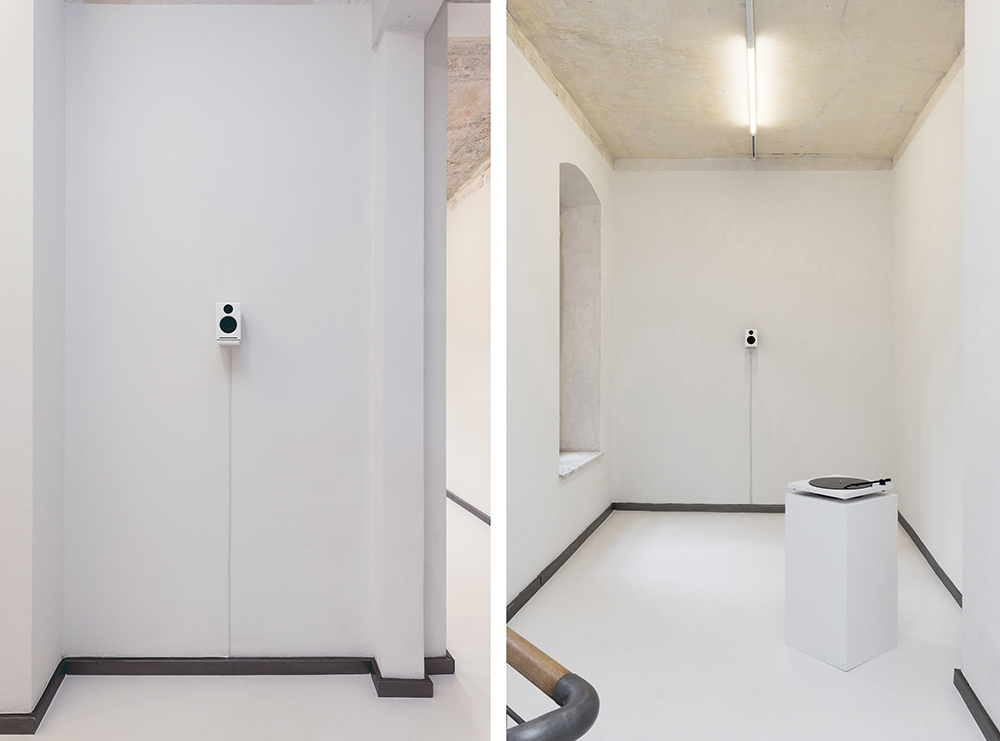|
| CURRENT |
| WORKS |
| PUBLICATIONS |
| BIOGRAPHY |
| CONTACT |
|
Canon for Computational Utterance |
Composition Loop Record with locked grooves, Turntable, Amplifier, Speakers Canon for Computational Utteranceis a series of pieces that unfolds unique to each visitor in space and over time based on Diana Deutsch’s research in the field of musical psychology about how we hear words and phrases differently due to our knowledge, beliefs, and expectations. By employing the form of a perpetual canon, the pieces are composed of word-like sounds generated by a machine learning model trained with speech data collected from 109 native speakers of English with various accents. For Canon for Computational Utterance,the machine learning model was set to run without any audio nor textual inputs. The results were unintelligible word-like sounds that carry the phonetic and structural features of spoken English, but do not form any meaningful linguistic representation. The newly generated, word-like utterances include familiar sounds as well as sounds that are specific to the machine learning model and cannot be interpreted easily by the visitors. They are used to compose a unique canon which is cut on a vinyl record as a locked groove to be played in loop through speakers in the exhibition space. The simple set up allows the visitors to focus on the unfolding sound patterns that emerge and disappear as well as on their own desire to detect meaning. Photo by Jannis Uffrecht |
|
|
![]()
Copyrights © 2005 - 2024 Yutaka Makino. All Rights Reserved.

